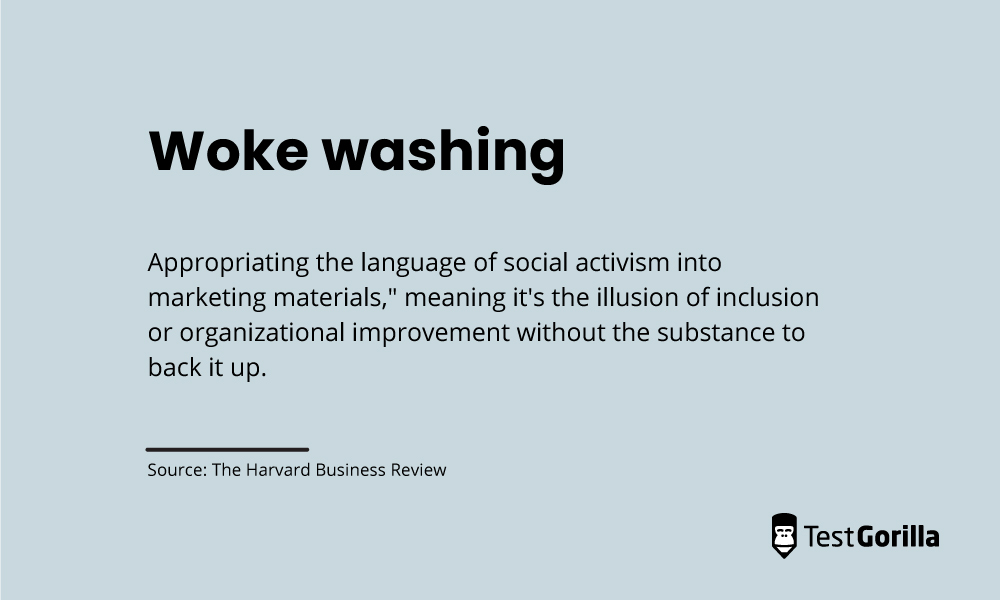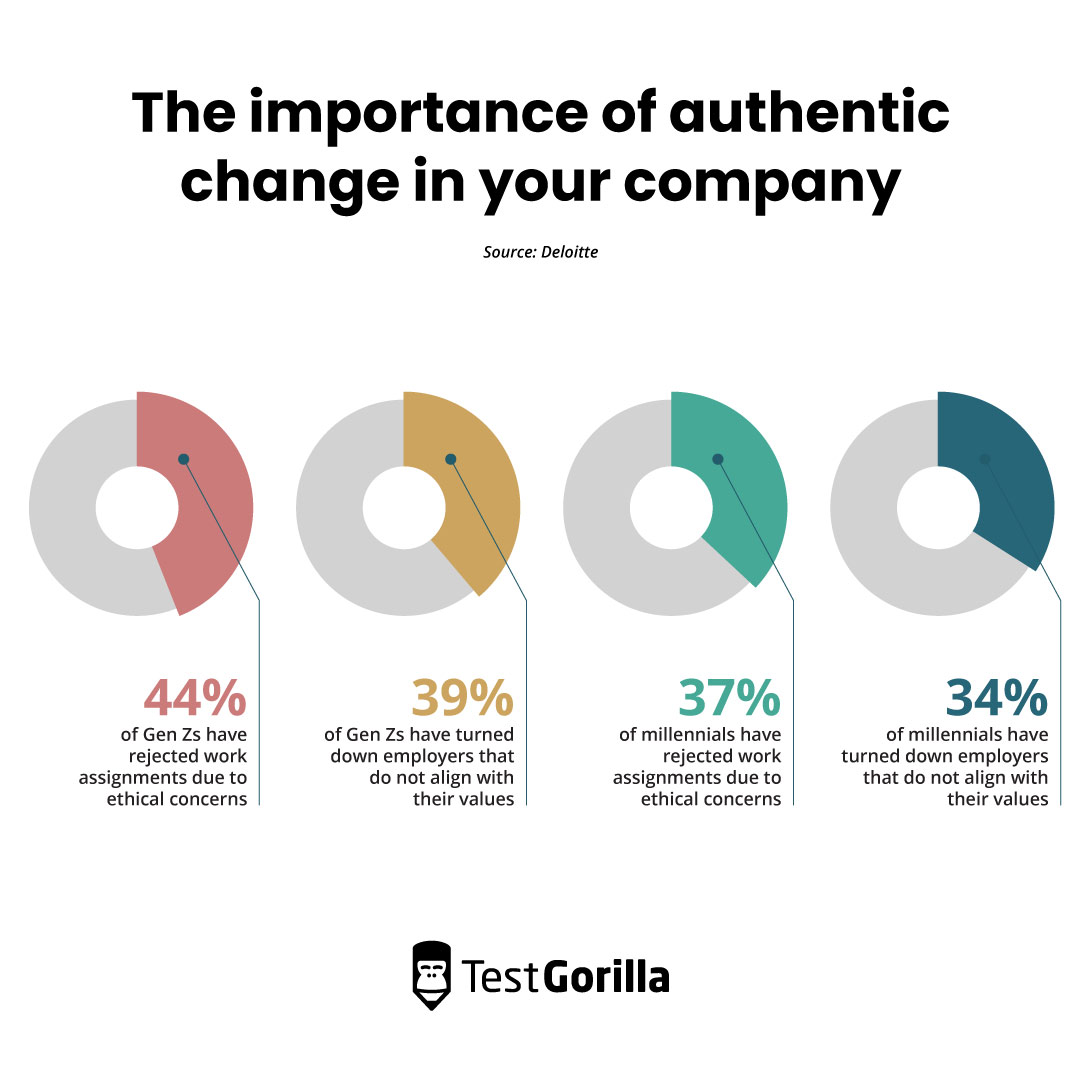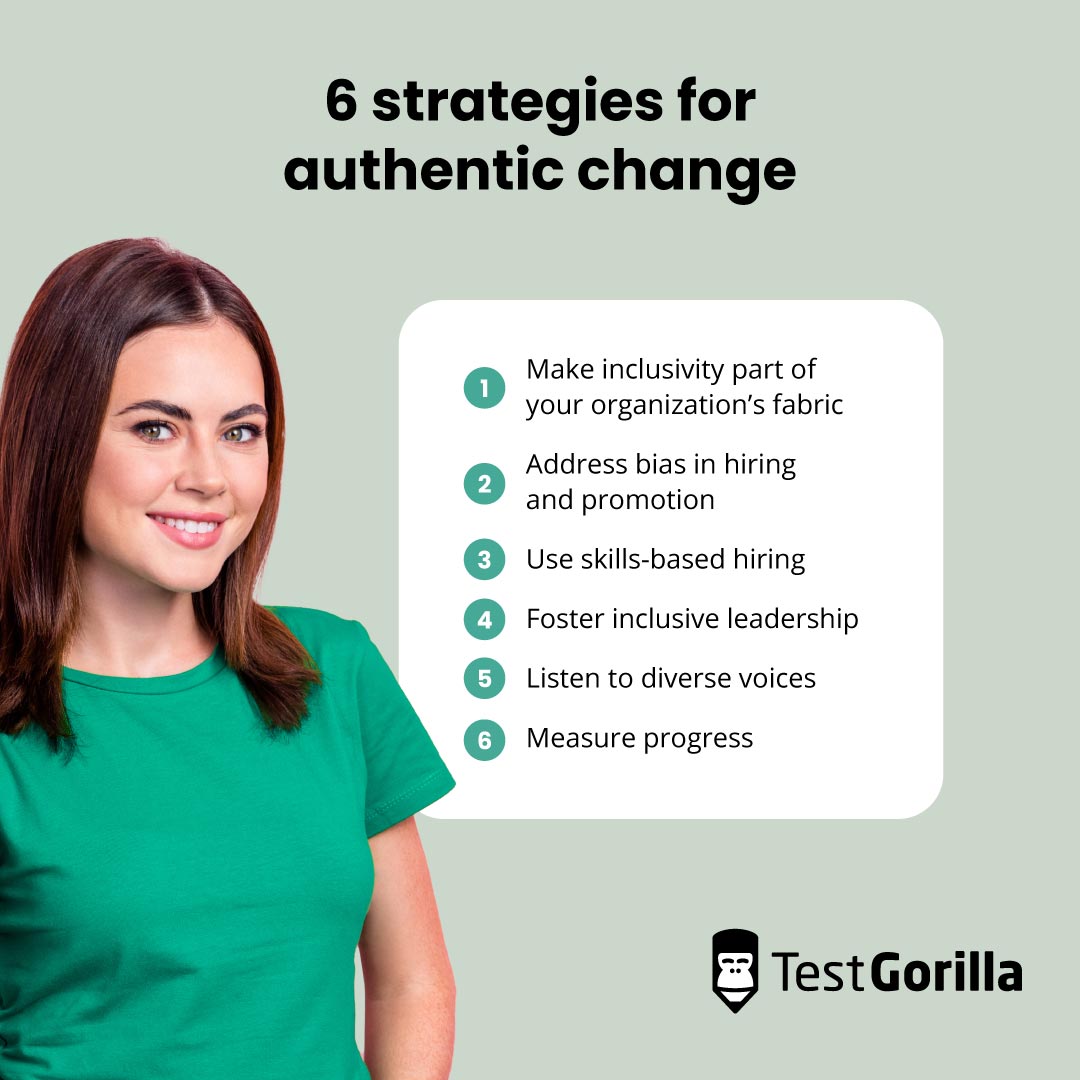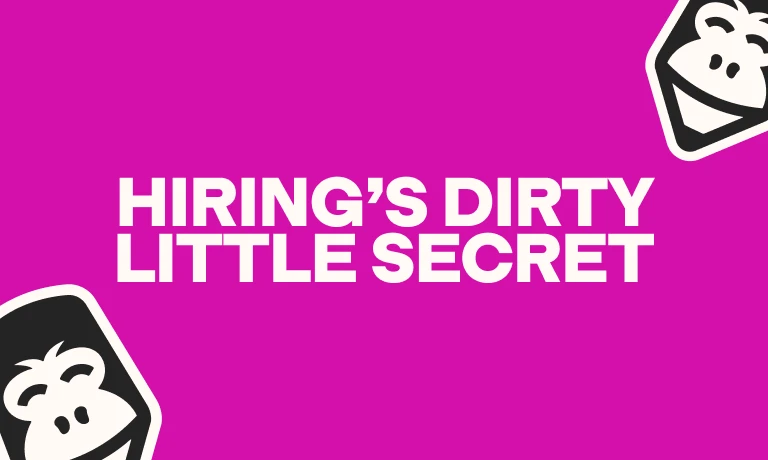What is woke washing and how can organizations make authentic change?
"After I saw the reaction and I read what people had to say about it, I most definitely saw what went wrong," said model Kendall Jenner, after appearing in the widely criticized 2017 Pepsi commercial.
The advertisement portrays Jenner as the leader of a group of protestors, awkwardly replicating the Black Lives Matter movement. The ad's pivotal moment shows a police officer accepting a Pepsi from Jenner, leading to jubilant reactions from the model-like demonstrators and portraying a moment of camaraderie between the officer and the protestors.
What went wrong was that, rather than addressing the core issues in a meaningful way, Pepsi was co-opting the Black Lives Matter movement to appear, rather than actually be, socially responsible (and viewers saw right through it). This lack of integrity is known as "woke washing," where a brand makes superficial efforts to present itself as diverse and inclusive for its own branding purposes.
The global diversity and inclusion (D&I) industry was worth $9.3 Billion in 2022 as a result of organizations recognizing the importance of building diverse and inclusive workplaces and spending big on D&I initiatives and training programs.[1]
However, some companies (like Pepsi) are engaging in a little more than D&I washing (aka “woke washing”). This can involve initiatives like changing a brand logo to rainbow colors for Pride month or hiring more women in leadership positions, but giving them impossible-to-achieve goals that set them up for failure.
In this article, we’ll explore what woke washing entails and outline some strategies that can drive authentic change.
We’ll also look at how a skills-based approach to hiring and promotion helps you eliminate bias and access a more diverse and talented workforce.
What is woke washing?
The Harvard Business Review defines woke washing as: "Appropriating the language of social activism into marketing materials," meaning it's the illusion of inclusion or organizational improvement without the substance to back it up.
Woke washing happens when companies trivialize current social justice causes and movements in their advertisements and branding strategies to appear "woke" and, therefore, benefit from it.
When companies exploit social issues for profit they're potentially undermining the genuine efforts of advocates for diversity and inclusion and other causes. This has added to an overall lack of trust among younger generations, where 6 in 10 Gen Zs believe businesses have no ambition beyond wanting to make money.[2]
This means that, to win the competition for skilled talent, it's important for businesses to differentiate themselves between companies that truly prioritize social causes and those that may be using them solely as a marketing tactic.
Woke washing case study: International Women's Day and fast fashion
In recent years, various fast fashion companies including H&M, Zara, Boohoo, and Shein, have attempted to capitalize on the momentum of International Women's Day, a day dedicated to celebrating women's achievements and advocating for gender equality.
These brands' marketing materials highlighted women's empowerment and equality, emphasizing the importance of solidarity and progress. While these campaigns might have generated positive attention and revenue, they can be seen as shallow attempts to align with a social cause without making substantial changes within the company.
This is because many fast fashion brands are known for their questionable labor practices, including low wages and poor working conditions for the predominantly female workforce in their supply chains. Additionally, these brands are often associated with environmentally harmful practices, contributing to pollution and waste.
This misalignment between the brands' marketing messages and their actual practices raises concerns about the authenticity of their commitment to women's empowerment.
6 strategies for authentic change
Driving authentic change in your company can set you apart from companies that appear to have a lot to say but aren't actually doing anything to improve their diversity and inclusion efforts.
This is especially important because 44% of Gen Zs and 37% of millennials have rejected work assignments due to ethical concerns. Meanwhile, 39% and 34% respectively have turned down employers that do not align with their values.[2]
Here are six strategies you can use to put your money where your mouth is and give employees what they really want from company D&I efforts.
1. Make inclusivity part of your organization’s fabric
Instead of having a diversity and inclusion (D&I) statement that gets written, posted on a website, and forgotten about, integrate it into your organization's mission, values, and goals. To be a successful company pillar, your D&I strategy also needs to be championed by leaders, clearly communicated to every team and individual, and have concrete action plans.
This way, you're setting yourself up for success by putting D&I at the center of your organization and making sure everyone is on board.
Here's how to build inclusivity into your business:
Define inclusivity. In your D&I statement, develop a clear and comprehensive definition of what inclusivity means within your organization and how you aim to improve it.
Provide diversity and inclusion training. Help your people learn how to address unconscious bias, cultural competence, and effective communication.
Foster a culture of respectful communication. Use inclusive language and make sure all employees feel heard and valued.
Ensure accessibility. Make sure physical spaces, digital platforms, and communications are accessible to people with disabilities.
Offer flexible work options. This helps accommodate various needs, for example, those of employees with dependents and employees who are neurodivergent.
Engage with local communities and social causes. Invite your people to vote on notable causes they'd like to support and then follow through on your organization's commitment to broader societal change.
2. Address bias in hiring and promotion
Review job descriptions and qualifications to ensure they're free from bias and genuinely reflect the necessary skills and qualifications for success in the role. Consider implementing blind resume screening and structured interview techniques to minimize unconscious biases and promote fairness.
You can use structured interview techniques like:
Developing a set of standardized questions
Asking behavioral questions on how they've handled specific situations
Utilizing a panel of interviewers or a culture committee
These can all help minimize bias and improve internal mobility. This is because they help make sure all candidates are evaluated based on consistent and relevant criteria.
You can also use skills-based promotion and talent assessments to determine who gets hired or promoted based on the candidate's applied skills and ability to learn new ones.
Research shows that 62% of Black Americans, 55% of Hispanics, and 62% of veterans are skilled through alternative route (STAR) workers, or employees who didn't follow traditional education pathways.[3] This means, by assessing applicants on skills instead of education, degree, or connections, you can level the playing field for diverse workers.
3. Use skills-based hiring
Skills-based hiring involves using scientifically backed tests to judge candidates on the core skills needed for an open role.
According to our 2022 State of Skills-based Hiring report, 91% of companies using a skills-based approach to hiring see an increase in diversity. Moreover, 72.1% of those hired using skills-based hiring were either happy or very happy in their current role, compared to 62.9% of those recruited via other methods.
This means you get happier employees who stay longer, so it increases employee retention while decreasing your chances of mishiring. Considering a mishire is 24 times the cost of an employee's annual salary, this also means significant financial savings for the company. Additionally, because skills-based hiring helps you attract and retain diverse team members, it's proven to improve business outcomes. This is supported by research in our report: Ethnically diverse teams are 36% more likely to financially outperform less diverse teams, while gender-diverse teams are 25% more likely to.
Use skills-based tests to hire as well as upskill and reskill existing teams and drive authentic change in your company. You can test for soft, hard, and transferable skills and choose from a variety of assessments, including:
4. Foster inclusive leadership
To build an attractive and inclusive company culture people want to be part of, leadership should embody the company's goals and values. This means investing in a diverse leadership team with the skills and experience to foster inclusivity and authenticity.
For example, studies show that leaders who actively listen to their team members significantly improve employees' job performance and work experience, which increases productivity.[4]
Moreover, people are more likely to turn to leadership when they know they'll understand and relate to their experience, which is why empathy is considered the number one trait for leaders.[5]
Here's how you can foster inclusive leadership:
Use talent assessments. Spot the best candidates for leadership positions with skills tests like the Leadership and people management test, Communication test, Motivation test, and Business judgment test.
Lead by example. Inclusive leaders set the tone by demonstrating inclusive behaviors in their interactions, decisions, and communications. Their actions serve as a model for others to follow.
Provide training and development opportunities. This can help enhance leaders' leadership skills, including communication, conflict resolution, and bias reduction.
Encourage open communication. Create a psychologically safe environment by addressing sensitive topics, actively listening to your team, and fostering a safe space for conversations.
Offer equitable opportunities. Ensure equal access to opportunities for growth, advancement, and high-visibility projects, regardless of background.
5. Listen to diverse voices
Research shows that younger generations of workers want to be empowered to drive change within their organizations.[2] However, of the companies that actively seek employee feedback, a third of millennials and Gen Z believe company decisions are still made from the top down, and employee feedback isn't often acted upon.[2]
This is why it's important to create opportunities for employees to actively participate in shaping the organization's D&I efforts. Here's how:
Encourage employee resource groups (ERGs). Support the formation of ERGs for various identities (for example, LGBTQ+, women, and people with disabilities) to provide a platform for networking, support, and advocacy.
Get regular feedback. Administer employee surveys, host focus groups, and hold one-on-one conversations to understand the unique challenges faced by different employee groups.
Create a mentorship program. Actively mentor employees from underrepresented groups, helping them develop skills and advance in their careers. Then, gather feedback about their experience.
6. Measure progress
It's crucial to establish clear metrics and best practices to measure progress in D&I initiatives. This means identifying key performance indicators (KPIs) that are relevant to your team and company to help you benchmark success.
For example, you can regularly assess metrics like:
Representation or workforce demographics
Employee retention
Employee satisfaction
Turnover rate
Retention rate
ERG engagement
Gender pay gap
Advancement opportunities for underrepresented groups
Then, use these metrics to track progress, identify areas of improvement, and hold leaders accountable for driving change.
The best insights on HR and recruitment, delivered to your inbox.
Biweekly updates. No spam. Unsubscribe any time.
Drive real change with skills-based hiring
It can take years for brands to recover from transparent cases of woke washing, which can lead to a lack of customer trust as well as significant financial losses. Pepsi still hasn't fully recovered from its "tone deaf" commercial, despite CE0 Indra Nooyi's claim it was only meant to depict a "peace march, not a protest march."
Making inclusivity part of your organization's fabric, fostering inclusive leadership, and listening to diverse voices helps you attract and retain the best talent, improve employee engagement, and increase motivation.
Additionally, when you adopt a skills-based approach to hiring and promotion, you can increase diversity in your team and create a culture of happy, innovative employees with better output. This helps create a positive feedback loop of employees who want to give back to their communities and keep building on their company's investment in real change.
Want to build a workforce that buys into your company values? Skills-based hiring lets you access and recruit diverse talent with the skills you need. |
Sources
1. "As Diversity, Equity & Inclusion Hits $9.3 Billion in Global Spending, Watch Out for These Key Trends in 2022." (2022). Cision. Retrieved August 7, 2023. https://www.prnewswire.com/news-releases/as-diversity-equity--inclusion-hits-9-3-billion-in-global-spending-watch-out-for-these-key-trends-in-2022--301487159.html
2. "2023 Gen Z and Millennial Survey." (2023). Deloitte. Retrieved August 8, 2023. https://www.deloitte.com/global/en/issues/work/content/genzmillennialsurvey.html
3. "Reach for the STARs: Realizing the Potential of America’s Hidden Talent Pool." (2020). Opportunity @ Work. Retrieved August 8, 2023. https://opportunityatwork.org/our-solutions/stars-insights/reach-stars-report/#get-report
4. "Feeling Heard: Experiences of Listening (or Not) at Work." (2021). Frontiers in Psychology. Retrieved August 8, 2023. https://www.frontiersin.org/articles/10.3389/fpsyg.2021.659087/full
5. "New EY Consulting survey confirms 90% of US workers believe empathetic leadership leads to higher job satisfaction and 79% agree it decreases employee turnover." (2021). EY. Retrieved August 8, 2023. https://www.ey.com/en_us/news/2021/09/ey-empathy-in-business-survey
Related posts
You've scrolled this far
Why not try TestGorilla for free, and see what happens when you put skills first.





















